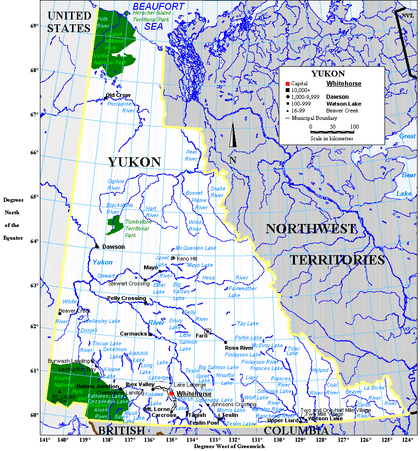Yukon Ice Patches facts for kids
The Yukon Ice Patches are special areas of ice found in the southern Yukon, Canada. They were discovered in 1997. These ice patches have kept hundreds of ancient tools and other items safe for a very long time. Some of these items are more than 9,000 years old! The first ice patch was found on a mountain called Thandlät, near Kusawa Lake. This area is about 60 km (37 mi) west of Whitehorse, Yukon. Soon after the discovery, the Yukon Ice Patch Project started. This project is a team effort between scientists who study old things (archaeologists) and six First Nations groups from the Yukon. The ice patches are on their traditional lands. These groups include the Carcross/Tagish First Nation, the Kwanlin Dün First Nation, the Ta’an Kwäch’än Council, the Champagne and Aishihik First Nations, the Kluane First Nation, and the Teslin Tlingit Council.
What are Ice Patches?
Scientists who study ice (cryologists) explain that ice patches are different from glaciers. Glaciers are huge, moving rivers of ice that slowly flow downhill. They get bigger over time and then start to move. Ice patches, however, do not move. They form when snow from winter stays on the ground and gets packed down into ice. They do not get big enough to flow like glaciers. Because they stay still, anything that falls onto an ice patch gets frozen and preserved without being crushed. This is why they are so important for finding ancient artifacts.
Discovering the Past
In the 1990s, the weather was very warm. This caused some of the ice patches to melt. This melting helped people find the ancient items. In September 1997, a person named Gerald W. Kuzyk found the very first artifact from the Yukon ice patches. It was a piece of an ancient hunting tool called an atlatl dart. He found it on Thandlät mountain, very high up at about 1,850 meters (6,070 ft).
Scientists and the six Yukon First Nations groups work together to study these ice patches. They learn about the history of the land and the people who lived there long ago.
One of the first discoveries was a small piece of a wooden dart shaft. It was found near Kusawa Lake. Scientists used a special test called radiocarbon dating to find out how old it was. They learned it was about 4,360 years old! They also found ancient caribou droppings (poop) that were about 2,450 years old. These early finds showed how important these ice patches were for learning about the past.
Treasures from the Ice
So far, more than 200 ancient objects and over 1,700 animal remains have been found in 43 melting ice patches in the southern Yukon. The items found are very old. Some dart shafts are 9,000 years old. Other items, like a musket ball, are from the 1800s.
Scientists have learned a lot from these finds. For example, they have seen three different ways people made throwing darts long ago. They also noticed that the hunting tools stayed pretty much the same for about 7,000 years. Then, around 1,200 years ago, people started using bows and arrows instead of throwing darts. All these amazing artifacts are kept safe by the Yukon Archaeology Program.
Even though there are no caribou (a type of deer) in the Kusawa Lake area today, old stories from Elders tell us they used to be everywhere. Elder Mary Ned, who was born in the 1890s, said caribou were "all over this place." The discovery of the ice patch artifacts helped prove these stories were true. People also remember that there was a caribou fence, or corral, on the east side of Kusawa Lake. This was used to help hunt caribou.


